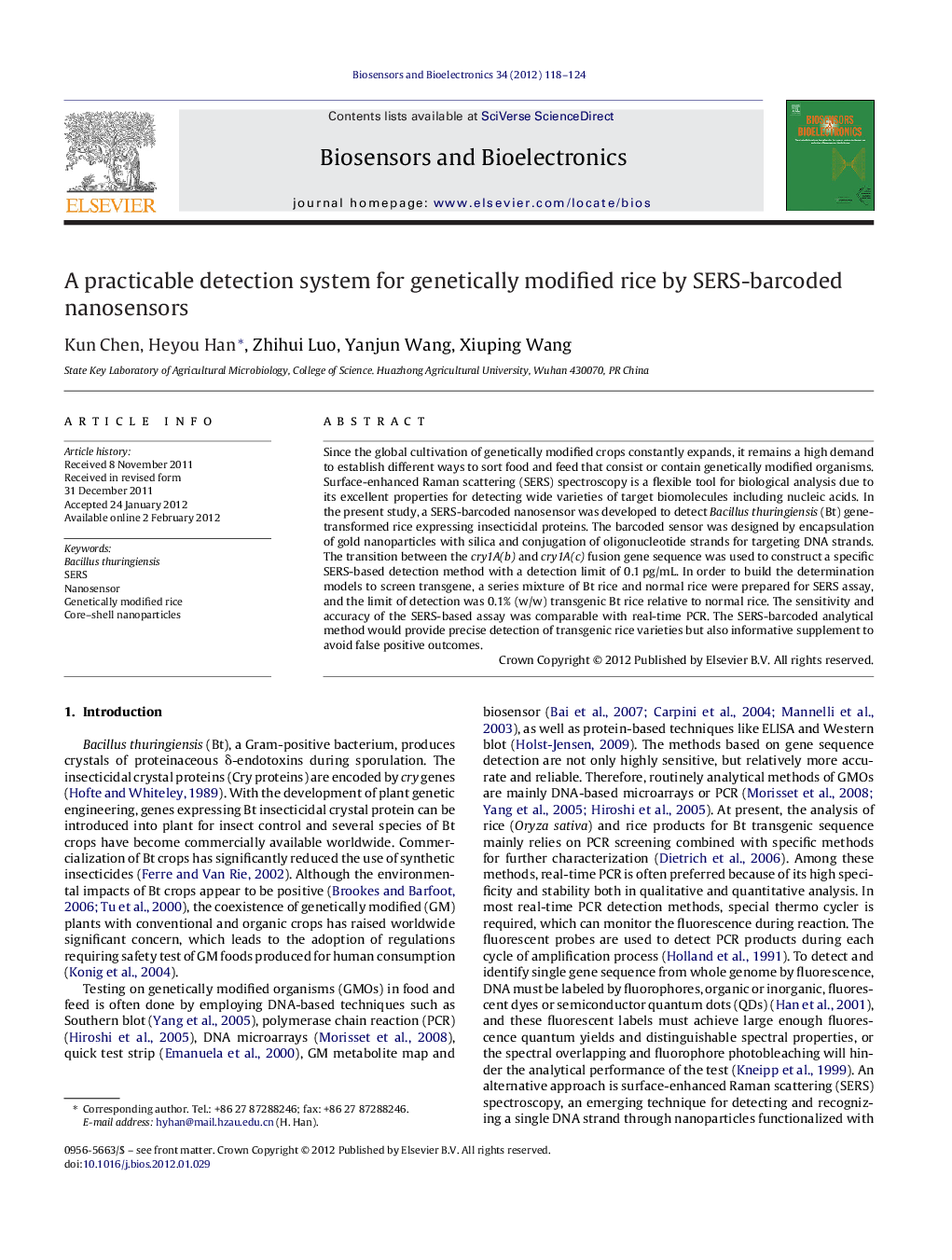| Article ID | Journal | Published Year | Pages | File Type |
|---|---|---|---|---|
| 867452 | Biosensors and Bioelectronics | 2012 | 7 Pages |
Since the global cultivation of genetically modified crops constantly expands, it remains a high demand to establish different ways to sort food and feed that consist or contain genetically modified organisms. Surface-enhanced Raman scattering (SERS) spectroscopy is a flexible tool for biological analysis due to its excellent properties for detecting wide varieties of target biomolecules including nucleic acids. In the present study, a SERS-barcoded nanosensor was developed to detect Bacillus thuringiensis (Bt) gene-transformed rice expressing insecticidal proteins. The barcoded sensor was designed by encapsulation of gold nanoparticles with silica and conjugation of oligonucleotide strands for targeting DNA strands. The transition between the cry1A(b) and cry1A(c) fusion gene sequence was used to construct a specific SERS-based detection method with a detection limit of 0.1 pg/mL. In order to build the determination models to screen transgene, a series mixture of Bt rice and normal rice were prepared for SERS assay, and the limit of detection was 0.1% (w/w) transgenic Bt rice relative to normal rice. The sensitivity and accuracy of the SERS-based assay was comparable with real-time PCR. The SERS-barcoded analytical method would provide precise detection of transgenic rice varieties but also informative supplement to avoid false positive outcomes.
► A SERS-based detection system was constructed to screen genetically modified rice. ► Core–shell nanoparticles were used to assemble the SERS-barcoded nanosensors. ► The limit of detection was 0.1% (w/w) transgenic rice relative to normal rice. ► The sensitivity and accuracy of the assay was comparable with real-time PCR.
